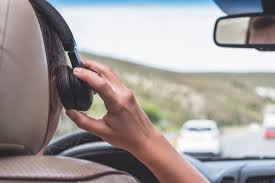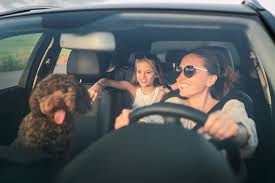DISTRACTED DRIVING
Surrounding Scenes (External Distractions)

1. What Is Surrounding Scene Distraction?
This type of distraction happens when a driver takes their attention off the road because of events or sights outside the vehicle, such as:
- Roadside accidents
- Billboards and advertisements
- Pedestrians or crowds
- Animals on the roadside
- Construction sites
- Beautiful scenery
- Unusual vehicles or events
- Police stops or emergency vehicles
Why it’s dangerous: Looking at outside scenes reduces focus on the road ahead and delays reaction time.
2. How Surrounding Scenes Distract Drivers
1. Visual Distraction
- Turning to look at an accident (“rubbernecking”)
- Staring at billboards or digital screens
- Watching people, animals, or events
- Getting absorbed in scenery
- Checking mirrors excessively to observe behind
2. Cognitive Distraction
- Thinking about what you just saw instead of driving
- Emotional reactions (shock, excitement, curiosity)
- Stress from observing accidents or police activity
3. Manual Distraction (Indirect)
- Adjusting mirrors to get a better look
- Slowing down suddenly to observe something
- Moving hands off the wheel while reacting
Rubbernecking is one of the leading causes of secondary crashes near accident sites.
3. Risks and Consequences
Distracted attention caused by external scenes can lead to:
- Rear-end collisions
- Lane drifting
- Sudden braking that surprises other drivers
- Missing red lights or stop signs
- Hitting pedestrians or cyclists
- Losing control of the vehicle
- Traffic jams and slowdowns
Other consequences include:
- Fines for dangerous driving
- Vehicle damage
- Injuries or fatalities
- Causing additional accidents near scenes
4. Safe Driving Practices
1. Maintain Focus on the Road
- Ignore events that do not affect your lane or path.
- Avoid turning your head to watch scenes as you pass.
2. Reduce Curiosity
- Remind yourself that looking won’t change the situation.
- Stay mentally disciplined: the road ahead matters more.
3. Slow Down Safely
- If traffic ahead slows due to an event, reduce speed gradually.
- Do not stop to observe roadside activities.
4. Limit Visual Overload
- Avoid staring at bright digital billboards.
- Keep your eyes scanning the road, not the environment.
5. Use Defensive Driving Techniques
- Expect sudden stops from other distracted drivers.
- Maintain safe following distance.
6. Emotional Control
- Stay calm if you witness accidents or police stops.
- High emotions can impair judgment.
5. Self-Reflection Questions
- What external scenes distract you most while driving?
- Have you ever slowed down to look at something outside the car?
- How did it affect your lane control or reaction time?
- What strategies can you use to keep eyes forward?
6. Quick Self-Check Quiz
- Mention two examples of surrounding scene distractions.
- True or False: It is safe to slow down suddenly to observe an event.
- What is “rubbernecking”?
- What should you do when you see bright billboards?
Answers:
- Accidents, billboards, crowds, animals, police stops.
- False — sudden slowing can cause accidents.
- Rubbernecking is when a driver turns or slows down to look at an accident or event.
- Focus on the road and avoid staring at the advertisement.
7. Key Takeaways
- External scenes can be just as distracting as phones or passengers.
- Your responsibility is to stay focused on driving — not on the environment.
- Curiosity leads to rubbernecking, which causes many secondary crashes.
- Maintain discipline: Eyes forward, mind on the drive.
Remember:Always drive your car — not the scenery.
Related Tutorials

DISTRACTED DRIVING
Emotional Distraction
1. What It IsEmotional distraction occurs when strong feelings—anger, sadness, stress, e...
Read More
DISTRACTED DRIVING
Wearing or Adjusting Headphones/Earbuds
1. What It IsAdjusting headphones or earbuds while driving is a form of manual and visual ...
Read More
DISTRACTED DRIVING
Dealing With Children or Pets
1. IntroductionChildren and pets can create sudden, unpredictable distractions inside a ve...
Read More